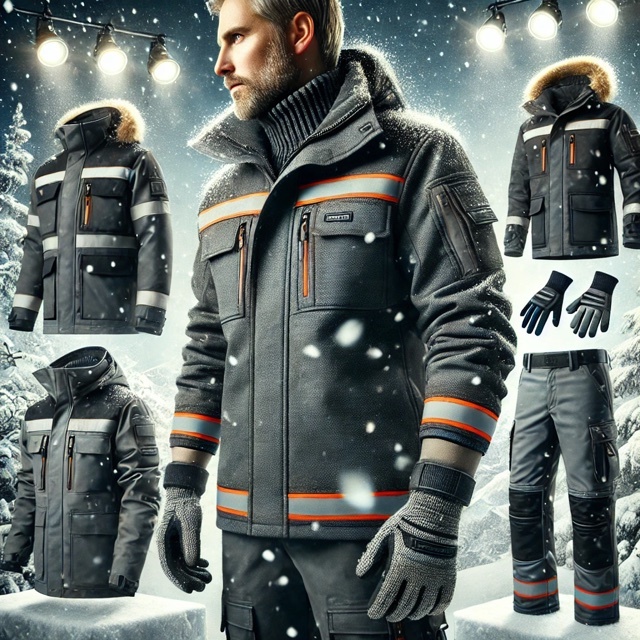
How to Layer Winter Workwear for Maximum Warmth and Mobility
When working in freezing conditions, choosing the right winter workwear is essential not only for your comfort but also for your safety and performance. At Safety Store Optimum BHP, we specialize in providing high-quality workwear that’s built for the harshest weather. In this guide, we’ll show you how to properly layer insulated clothing for winter, so you can stay warm without sacrificing mobility.
Why Layering Matters in Winter Workwear
Layering your insulated workwear properly helps regulate body temperature, manage moisture, and ensure flexibility in motion. Rather than relying on a single thick garment, combining base, mid, and outer layers provides better insulation, adaptability, and comfort throughout the day.
We have more information for you:
Portwest vs Snickers – Which Winter Workwear Brand Performs Better in Extreme Conditions?
The Best Safety Shoes for Winter – What to Wear in Snow, Ice and Sub-Zero Temperatures
Top 10 Best-Selling Insulated Jackets for Outdoor Work in Winter 2025
High Visibility Insulated Workwear: Stay Warm and Visible on the Job
How to Choose the Best Winter Workwear? A Complete Guide for Cold-Weather Jobs
The Three Key Layers of Effective Winter Workwear
1. The Base Layer – Moisture Management
Your first line of defense is a breathable, moisture-wicking thermal base layer. This layer should keep sweat away from your body, keeping you dry and preventing rapid cooling. Look for materials like synthetic fibers or merino wool, which offer both insulation and comfort.
🔗 Related products: Thermal base layers and insulated workwear
2. The Mid Layer – Insulation
The mid layer provides thermal insulation and traps body heat. This is where fleece jackets, insulated sweatshirts, and padded work vests come into play. For extra warmth, choose quilted or down-insulated materials.
For high-visibility environments, consider insulated high visibility workwear, which combines warmth with certified EN 20471 compliance.
3. The Outer Layer – Weather Protection
Your outermost layer should be waterproof, windproof, and durable. Winter work jackets made from breathable materials with sealed seams are the gold standard for outdoor professions. Brands like Portwest and Snickers Workwear offer high-performance options.
💡 For more insights on product specs, visit:
Best Insulated Workwear Brands: Portwest vs. Snickers Workwear
Portwest offers a wide range of insulated jackets with high visibility options, waterproof membranes, and thermal linings. Snickers Workwear, on the other hand, focuses on ergonomic design, flexible fabrics, and their signature 37.5® technology for temperature control.
Whether you choose Portwest or Snickers, both brands are compatible with professional layering systems — allowing you to adapt your workwear to fluctuating outdoor temperatures.
Don’t Forget Insulated Trousers and Accessories
To fully protect your lower body, choose insulated work trousers made from windproof and water-resistant materials. Some designs include knee pad pockets, snow gaiters, or reflective stripes for low-light conditions.
Accessories are just as important:
-
Waterproof gloves with thermal insulation
-
Fleece-lined beanies or balaclavas
-
Thermal socks and insulated safety boots
Explore our full selection of winter safety footwear to complete your outfit.
Mobility Matters: Don’t Overdo the Layers
It’s easy to overdress in cold weather, but too many bulky layers can restrict movement and reduce productivity. The key is to choose high-quality garments designed for professional use — garments that provide insulation without bulk.
For example:
-
Stretch insulated trousers improve mobility.
-
Softshell work jackets offer wind resistance and flexibility.
-
Lightweight fleece work hoodies maintain warmth without excess weight.
Combining Layering with Reflective Safety
In winter, visibility is as important as warmth. Choose garments that combine insulation with EN ISO 20471-rated reflective details. Our high visibility insulated workwear is ideal for road workers, construction teams, and utility professionals.
Don’t compromise: your winter gear should keep you warm and visible.
Tips for Maintaining Layered Winter Workwear
-
Wash thermal layers regularly to remove sweat and bacteria.
-
Check outer jackets for signs of wear like fraying seams or broken zippers.
-
Use waterproofing sprays on shell layers to maintain water resistance.
-
Rotate garments between days to allow full drying.
Following these practices extends the lifespan of your winter PPE and ensures maximum protection.
Final Thoughts
Dressing for winter work isn’t just about piling on clothes — it’s about choosing the right layers for performance, protection, and flexibility. Explore our full range of insulated workwear, winter jackets, and cold-weather footwear at Safety Store Optimum BHP.
Have more questions?
Check out our expert guides:
Don’t miss out — check other blog posts for more tips!

